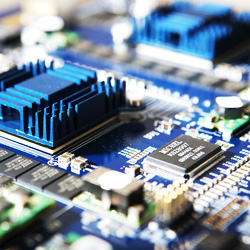
Then the argument of is digital better enters into the conversation. Bruce Jackson and Steve Harvey have written an excellent article where the make the following statement:
Perhaps more significantly, the MP3 revolution may be leading to a generation that has no concept of distortion.
A few years ago, an engineering acquaintance related how he had to sit his son down and explain distortion to him.
At the risk of sounding like an old fuddy-duddy, kids today are used to hearing “crunchy” audio.
Younger people who have only lived during this digital era are largely unaware of ‘good’ distortion, the acceptable harmonic distortion of analog audio.
To them, what we consider bad digital distortion is simply a part of the music that they listen to daily.
Trading poorly “ripped” MP3s (regardless of legality), they have become so used to the crunchy sound quality of the format that, as some readers who have discussed the matter with their own children may attest, they may find it not only acceptable but even preferable to CDs.
The crunch of digital distortion, which is not limited to MP3s, of course, but can just as easily find its way into the digital recording process and onto disc or into the live sound arena, is unpleasant.
If you want to argue the merits of digital please read their article, but for our discussion lets’s just accept that digital is here and “it ain’t going away”.
So the merits of digital, the protocol and transport aside what can DSP do for me?
I believe some of the most meaningful solutions that have come out of DSP are that speaker manufacturers are utilizing the power of DSP to correct some inherent mechanical problems that occur when a loudspeaker convert sound back to acoustical energy.
In my interview with Kenton Forsythe, founder of EAW, Kenton talks about how some new “gray box” settings which he refers to as Focusing, correct the inherent difficulties in transducer design and the ability to impact time smear.
The reality is much better sounding speakers at potentially a much lower price. These “focusing” DSP solutions are provided by the speaker manufacturer and not meant to be “user” set.
So what DSP does the end-user get to play with?
What I see as optimal DSP usage in a system would be a mic with built in manufacturer set DSP that maximizes the characteristics of that microphone to make it sound as transparent as possible. This would be followed by a digital mixing console that would allow the sound engineer maximum control over the audio signal.
This would include level, equalization and all sorts of processing (gates, compression, reverb…etc.) including the ability to mix multiple sources and output them to various devices and/or locations.
After the mixing console the signal would be transferred to a system DSP box that would be set up (most likely by a systems contractor) to maximize the sound for a given space. This would include overall system EQ, crossovers, delay etc.
The final part of this chain would be an amplifier with manufacturer set DSP tailored to the speakers that are connected to the amplifier. And of course, the entire signal path would be all under the same digital transport thus creating an “all digital” solution where the only A/D and D/A is at the first input and on the last output of the system.
So, what are the potential pitfalls besides all of the potential A/D and D/A conversion? Simply, the ability to mess it up! The control that is available with DSP is extremely powerful and without a great understanding of how to properly use the DSP and essentially know what to touch and what not to touch and why is critical to the person operating a system.
Gary Zandstra is a professional AV systems integrator with Parkway Electric and has been involved with sound at his church for more than 25 years.
